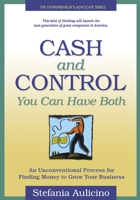By Stefania Aulicino
What have you learned from social media?
You could answer a lot of things, but I think it boils down to this:
People like to connect with each other!
And no wonder.
Your mother thinks you walk on water.
The better people know you, the more valuable you are!
Where are you most valuable?
Most likely your family: that’s your blood and your in-laws. Beyond that smallest community, your value grows as you extend your community reach to include those who share hobbies, sports, and those who know you at church, community work, and your neighbors.
Your value continues to grow reaching out to your class mates, colleagues you know from business, trade associations.
When you reach out even further, perhaps you are viewed as a thought leader in your industry, even in the world at large.
That’s the business of social media: social media makes the case for a cheap client acquisition model for business.
• Friends are a source of wealth! The better people know you, the more they value you.
• When you understand your clients, the more those clients value you.
• Creating friends is free: Customers deserve to be friends
From a business perspective, the 20th century was product-centric.
The 21st century is customer-centric
This is a fundamental business shift:
• In the 20th century, companies created a product and attracted customers. To get more customers they developed more products.
• In the 21st century, companies create a community of like-minded people. This community provides insights into a priority of what products they want to buy.
Look at the evidence:
Facebook is now the 3rd largest search engine in the world.
Facebook did not start out to be a search engine. Mark Zuckerberg started it as a way to get dates! Then he did what 21st century companies do: he used this community of like-minded people to add features they wanted. Using virtually a zero cost of customer acquisition model, Facebook is a $75 billion company effectively recognized as the 3rd largest search engine in the world.
This is not just relevant to social sites. It’s key for mainline business as well. Apple has overtaken Microsoft in market capitalization: Investors in the stock market view Apple as more value than Microsoft. Apple started as a little computer company. But it’s not a computer company now. It’s the creator of the Apple community; raving fans. A community that directed the company to shift its focus to mobile devices and a new life-style of computing and staying connected. Apple’s customer success has been reflected with success in the financial community of institutional buyers and investors in the marketplace who place a higher worth on Apple than Microsoft.
Facebook and Apple are leveraging CHEAP customer acquisition business models.
I’m not talking about “how to” be an internet marketer and SEO expert.
I’m addressing the “how to” of a critical business growth strategy!
How much do you spend on customer acquisition?
Where do you spend money to acquire customers?
Consider your budget for advertising; conference attendance, trade booths at shows, sales people who make call after call and get less than 1 for 1 conversion.
If you consider your revenue to be 100%, add up all the money you spend on customer acquisition and figure own what percent it is: Is customer acquisition 15%? (You wish!); 25%: maybe even 40% — that’s the model of the 20th century, not today.
How well do you know your customers?
Customers are human, they are not statistics!
They live on the same Maslow pyramid as your friends.
At the base of Maslow’s pyramid, they are worried about survival. After survival, they have wants. Ultimetly, just like your friends, they have desires—something much bigger than themselves. All of this explains why community is so important- it’s a human yearning.
Social community is the 21st century version of the age old TRIBE- the need to belong.
The nature of community is that it is custom- specific to you.
What is YOUR community?
If you’re going to spend time away from you immediate family you love, who do you enjoy spending time with? Who would you engage with, even if you never got paid?
I love to engage with business builders. I lose myself in dialogue with business owners focused on creating a bigger future- one that is different, more profitable, more impactful than yesterday. Business builders are my community.
For you it might be homeowners concerned about a healthy living space for their family; or manufactures committed to life-cycle maintenance; or mothers with children age 2 to 5.
Who do you enjoy?
To be a sustainable growth company in the 21st century, you need to build a predicable CHEAP customer action model.
Since you are building customer annuities, it’s ok if you lose money —but only just a little- on your initial client acquisition, but nothing like most companies of the 20thcentury accepted.
Better yet, your customer acquisition model is break/even, even generates a little profit, while delivering a loyal customer who will buy bigger ticket items with escalating frequency.
It’s time to focus on a being more efficient with your customer acquisition model.
Designing a customer acquisition model for the 21st century takes 3 steps:
1. DEFINE your best customer
2. RESEARCH where your best customer prospects hang out
3. ENGAGE them to deliver what they need
The cheapest customer acquisition model is no longer product-centric.
It’s customer-centric
Social media makes customer community easy.
I’m no social media guru, honestly I’m just learning myself: THAT is not my topic. My topic is driving value for a growing businesses.
The key is to apply these 3 steps to your company to design a CHEAP customer acquisition model.
What is your experience? Tell me your story. I’d love to hear what you think.
Stefania Aulicino, president of CapitalLinkUSA ensures business owns get cash to keep control of a bigger, more profitable company, faster, safer than they ever thought possible- in any economy. Become a magnet for non equity and equity sources to fuel your growth. Explore our tools, solutions and consulting options tailored for different growth stages and different budgets: www.CashAndControl.com


Comments